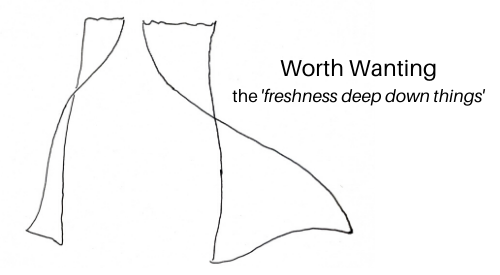
What happens when a people lose faith in their civilization? How can their faith be restored?
What, first of all, is a civilization? Any definition has to include lost civilizations like the Mayan and the Khmerian, ancient civilizations like the Sumerian and Harappan, as well as ours today, which may be one or many.
We can think of a civilization as an institution of multiple institutions.
What is an institution? On the conceptual level, it’s a set of norms, rules, guidelines and practices. On the grassroots level, it’s the people living in the freedom space afforded by the constraints and strictures these rules provide. On the administrative level, it’s the structures and resources for protecting that space. An institution is a collective project, rooted in a community with a social heritage.
What is a freedom space? Paradoxically, it’s a space with more opportunities for internal choice and intricacy because of its perimeter constraints and limits. A simple example: cell walls. But it’s more than just that. The freedom space created by an institution, bottom up or top down, embodies a value system as it pertains to some aspect of our lives–our families, our politics, our work, our religion. and so on.
By value system, I mean this: a deep and visceral apprehension of the way things are and work, as well as of what is worth wanting, and the relationship between the two–positive, preferable or perfect.
So the institutions of our democracy represent (or should) the values expressed in the Declaration of Independence: all men are created equal…
We as individuals are constituents of multiple institutions, and institutions overlap with each other (e.g. the military-industrial complex). Our institutions can be informal (for example, the etiquette of Zoom, or formal (the rules of the road). They can be explicit and self-conscious like a church denomination or implicit and customary like a musical genre. They can be of different grades of generality (“the way we do things around here vis-a’-vis corporate policy.”) None of us are constituents of every institution; indeed institutions compete for constituents.
A city with its density of people and projects has correspondingly a multiplicity of institutions. A particular set of interacting institutions representing the ecosystem of value systems shared by one or several peoples is itself an institution, a civilization.
Tools, fashion, art, architecture represent a civilization insofar that they are expressions of the value systems of its institutions and their constituents.
Institutions last longer than people (usually) and civilizations longer than any particular institution, but all are vulnerable and mutable. Any civilization is a platform like a raft floating on an environment sea that can swamp it. Civilizations can fight against, destroy or swallow up each other. More peacefully, the institutions of civilizations can adapt to new circumstances and adopt external influences.
It’s also the case that civilizations can lose faith in themselves, or rather individuals can lose faith in the relevance of the value systems their institutions instantiate and in the efficacy of the constraints used to protect freedom spaces.
Gradually the constraint systems of institutions may lose credibility through multiplying loopholes and special exceptions. Proliferating may, must and must not constraints present constituents with vexatious dilemmas more and more often. Sometimes institutions have the internal vitality to reform themselves to resolve such issues by, say, changing the law, or simplifying a system (as China did with its writing system). Sometimes not.
More lethal in the long term is the loss of relevance of the value system. More and more constituents may lose the sense of the particular potentiality, energy and power a institution once had. What is left may be just a zombie loyalty, movement without meaning.
How do institutions retain the vitality of their value systems? Through encounters: occasions of one making common cause with the livingness of an other.
Value systems exist in two worlds, the mundane and the transcendent. Mundane values pertain to issues of life, comfort and dignity, to profit, power and perpetuation, to urgencies and conveniences. Some of the tokens of these intangible values are money, armies, fashion, balance sheets, courts and so on. We might call these dependent values because they are premised on the existence of other institutions–cuisines, for instance, taking agriculture for granted.
In order for any dependent value to retain its power to compel, it needs to be regularly refreshed from the bottom up, and this refreshment only comes through encounters, the portal of transcendent freshness on the mundane world. This freshness expresses itself in experiences of beyondness and of interestingness (what’s impressive, intriguing or intimate); in the appearance of novelty; and in exhibitions of solidarity (hospitality, friendship and exploration). Transcendent values are those of encountering, inherent, independent. Encounters are how we discover what’s worth wanting.
The livingness (the welcome to freshness) of individuals in their encounters affects the livingness of the institution as a whole: at the grassroot level through new personal concerns and criteria, powerful stories of new experiences and visions, and persuasive examples of new ways of living, as well as by gate-keeping and resource allocation decisions at the administrative.
Institutions of every grade up to the civilization as a whole make room for and honor encounters and encountering, or else they start to lose their raison d’etre.
It’s clear that American civilization, at least, is experiencing a shake-up of many of its institutions, formal and formal. Covid lockdowns, for instance, have put many institutions to the test: Are they still relevant? Can they adapt? What can replace them? Can we adapt? (A future without concerts? Let it not be!)
The future is open, as are encounters. Through the latter, freshness shares what’s worth wanting with the former.
